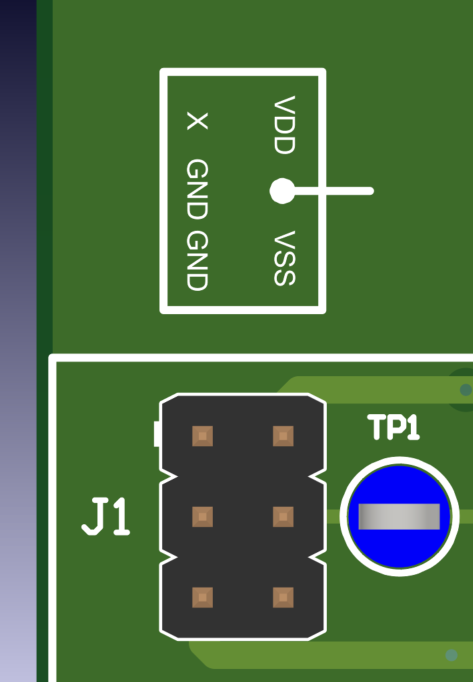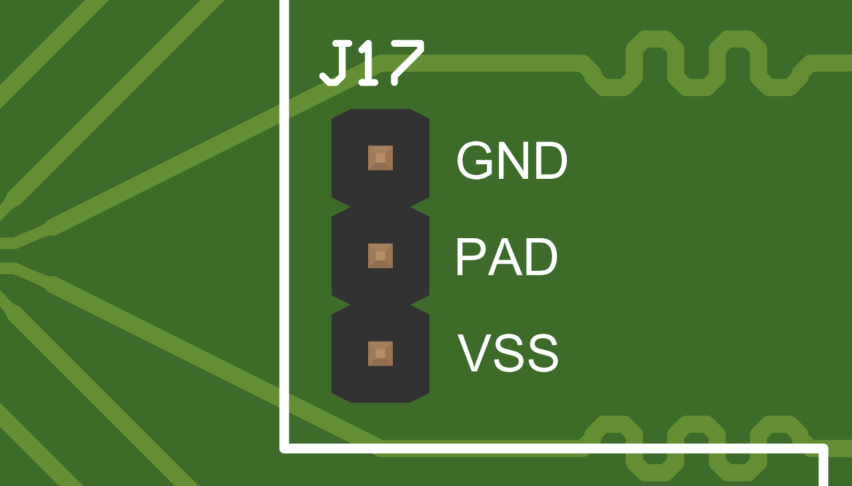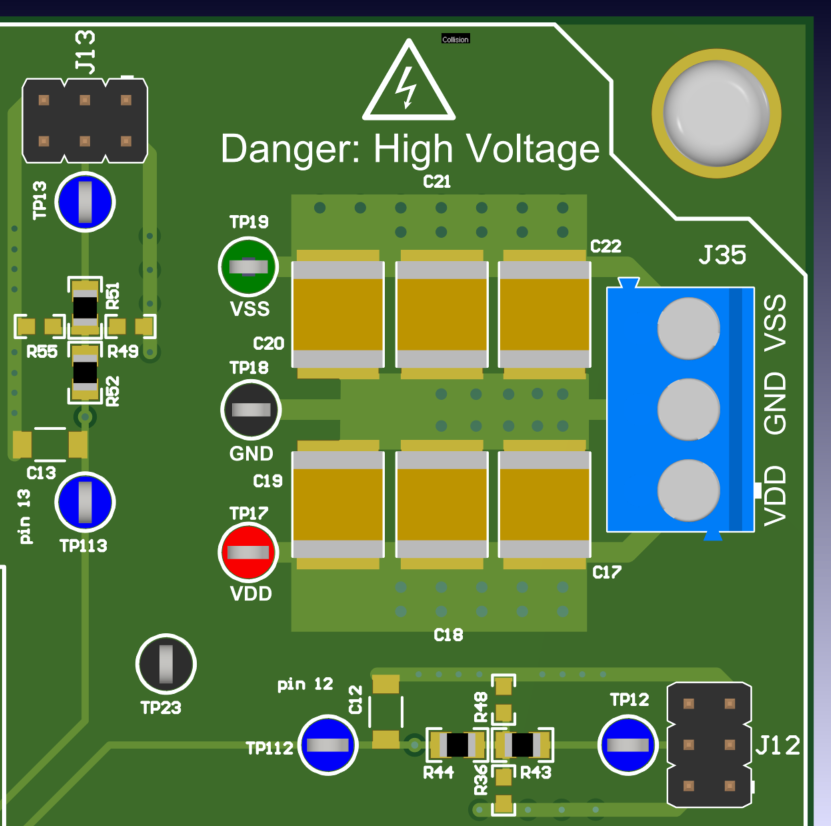SCDU028 August 2021
5 Header Connections and Test Points
There are 16 headers located around the board with designators J1 through J16. These 3-by-2 headers serve as connections to power planes and to signals of the DUT (U1). Each pin of the DUT has similar header and test point configuration. At four different locations around the board, a legend shows the connections of the pins of the nearby four headers. Figure 5-1 shows a representation of the header associated with pin 1 of U1.
 Figure 5-1 Header J1 for U1.1
Figure 5-1 Header J1 for U1.1The silkscreen legend represents the connections of the pins of J1. Figure 5-2 shows the pin numbers of this header from this same perspective.
Table 5-1 also shows the connections.
| Header pin number | Connection |
|---|---|
| 1 | No connection |
| 2 | VDD |
| 3 | GND |
| 4 | U1 |
| 5 | GND |
| 6 | VSS |
For all headers J1 through J16, the connections are the same, but are rotated by a multiple of 90° according to their position on the board. A legend is included for each rotation.
There is one 3-by-1 header located near the DUT (J17). Pin 2 of this header is connected to the thermal pad of the DUT. Pin 1 of this header is connected to GND, and pin 3 of this header is connected to VSS.
 Figure 5-3 Thermal Pad Selector
Figure 5-3 Thermal Pad SelectorThe connections of J17 are also labeled on the board’s silkscreen layer next to the header.
In addition to headers, multiple test points are located around the board. Black test points (TP18 and TP20-TP26) are connected to GND, the red test point (TP17) is connected to VDD, and the green test point (TP19) is connected to VSS. The remaining blue test points (TP1-TP16 and TP101-TP116) are connected along the signal paths of the pins of U1.
 Figure 5-4 Test Point Colors
Figure 5-4 Test Point ColorsThe last two digits of the blue test point number represent the pin with which the test point is associated. For example, TP16 and TP116 are both pin 16 of U1.
Table 5-2 shows the test point connections.
| Designator | Connection |
|---|---|
| TP1 | J1.4 |
| TP2 | J2.4 |
| TP3 | J3.4 |
| TP4 | J4.4 |
| TP5 | J5.4 |
| TP6 | J6.4 |
| TP7 | J7.4 |
| TP8 | J8.4 |
| TP9 | J9.4 |
| TP10 | J10.4 |
| TP11 | J11.4 |
| TP12 | J12.4 |
| TP13 | J13.4 |
| TP14 | J14.4 |
| TP15 | J15.4 |
| TP16 | J16.4 |
| TP17 | VDD |
| TP18 | GND |
| TP19 | VSS |
| TP20 | GND |
| TP21 | GND |
| TP22 | GND |
| TP23 | GND |
| TP24 | GND |
| TP25 | GND |
| TP26 | GND |
| TP101 | U1.1 |
| TP102 | U1.2 |
| TP103 | U1.3 |
| TP104 | U1.4 |
| TP105 | U1.5 |
| TP106 | U1.6 |
| TP107 | U1.7 |
| TP108 | U1.8 |
| TP109 | U1.9 |
| TP110 | U1.10 |
| TP111 | U1.11 |
| TP112 | U1.12 |
| TP113 | U1.13 |
| TP114 | U1.14 |
| TP115 | U1.15 |
| TP116 | U1.16 |
Terminal block J35 is the power input for the board. Three power rails (VSS, GND, and VDD) are labeled on the board’s silkscreen layer, indicating the identities of the input pins of the header. Connect the power supply rails at this terminal block to power the board.